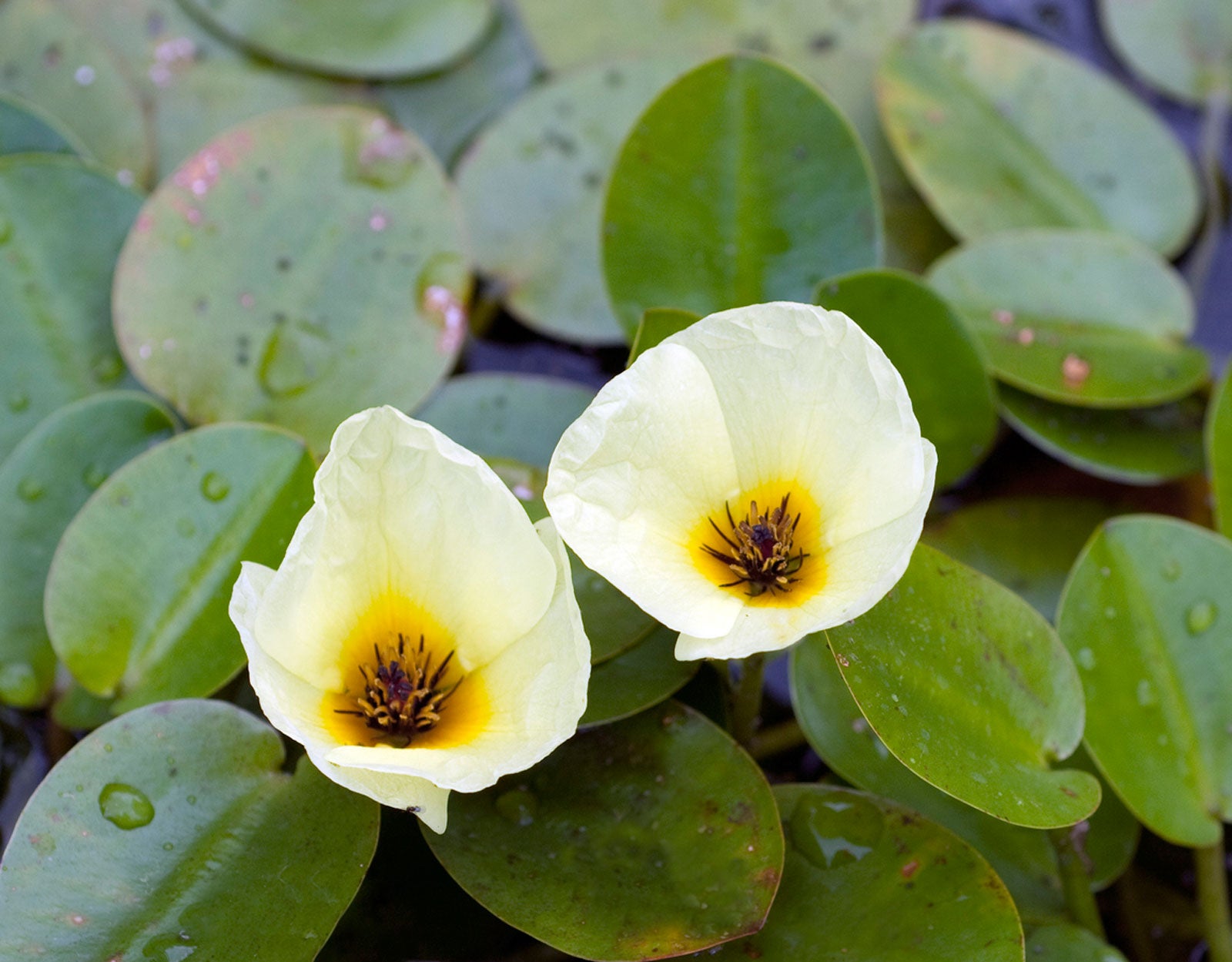Water Poppy Care – How To Grow Water Poppy Floating Plants


Creating an inviting outdoor space is paramount for many gardeners. While the planting of trees, flowering shrubs, and perennial plants can dramatically increase the appeal of green spaces, some homeowners add a pond to their property.
Ponds or other small bodies of water can create a beautiful focal point that is sure to be the envy of the neighborhood. However, these ponds will require proper care and maintenance in order to truly look their best. This includes the introduction of ornamental plant life to prevent algae growth and aid in water filtration.
One plant, the water poppy (Hydrocleys nymphoides), can be a lovely addition to the backyard waterscape – but what is a water poppy?
Water Poppy Facts
Water poppy floating plants are perennial aquatic ornamentals hardy to USDA zones 9-11. Native to Central and South America, the plant produces a multitude of flat leaves with a glossy texture. Cheerful, yellow flowers spring forth from the mass of foliage when water temperatures reach at least 70 F. (21 C.).
Though the three-petaled blooms only last for one day, plants will produce flowers throughout the entirety of the summer growing season.
How to Grow Water Poppy
Water poppy plants can be grown in any pond with a shallow bottom, as they grow best when submerged about 6 inches (15 cm.) below the surface of the water. Before planting, make certain to check local regulations regarding the introduction of aquatic plants to ensure the plant doesn’t escape the pond.
First, obtain a water poppy plant. These are commonly available through retail pond supply stores and online. Select a location within the pond that receives direct sun, as this is required for the plant to thrive. Bare root water poppy floating plants can be submerged and planted directly into the soil or be placed into pots with soil which can later be sunk into the pond.
Gardening tips, videos, info and more delivered right to your inbox!
Sign up for the Gardening Know How newsletter today and receive a free copy of our e-book "How to Grow Delicious Tomatoes".
Though water poppy care is minimal, the method in which the water poppies are planted will be vital to success. If growing these plants in regions beyond their hardiness zone, gardeners may need to remove the plant from the pond and store for the winter season.
Make certain to store the plant in a frost-free area and keep the soil consistently moist until the chance of frost outdoors has passed in the spring. When the weather has warmed, the root can then be replanted into the pond.

Tonya Barnett has been gardening for 13 years. Flowers are her passion. She has transformed her backyard into a cut flower garden, which she regularly chronicles on her YouTube channel http://www.youtube.com/@tonyawiththeflowers.
-
 Try The Trend – Turn Any Bed Into A Keyhole Garden With This Clever In-Ground Composter
Try The Trend – Turn Any Bed Into A Keyhole Garden With This Clever In-Ground ComposterKeyhole gardening is an efficient and sustainable practice that saves space. Get started on this DIY project quickly and easily with an in-ground composter.
By Bonnie L. Grant
-
 4 Superfast Composting Methods: Turn Waste Into Garden Gold In 30 Days Or Less
4 Superfast Composting Methods: Turn Waste Into Garden Gold In 30 Days Or LessTry the fastest composting methods to turbocharge your pile and transform kitchen scraps and garden waste into finished compost in just a few weeks.
By Mary Ellen Ellis